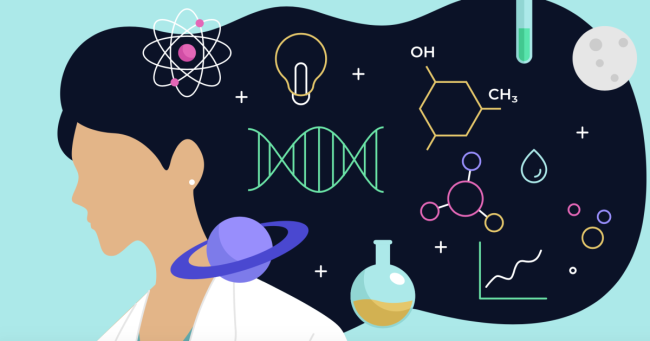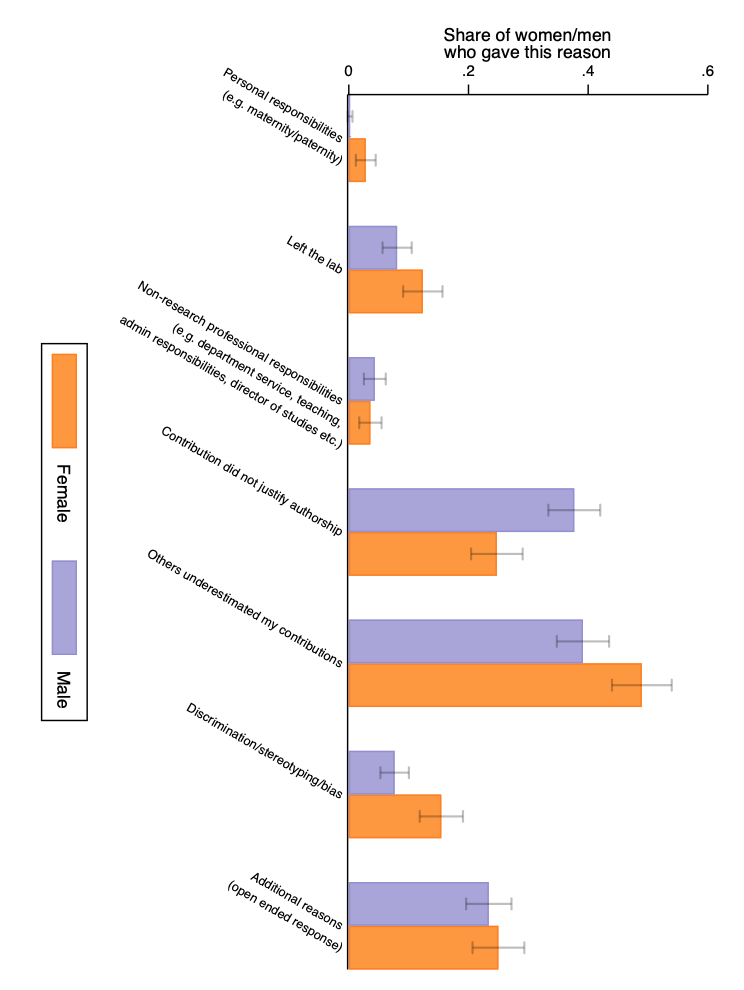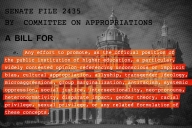You have /5 articles left.
Sign up for a free account or log in.

Study examines the uncredited contributions of women to science.
Vector Artist/iStock/Getty Images Plus
James Watson and Francis Crick (not Rosalind Franklin) getting all the initial glory for unlocking the structure of DNA may be the most famous example of how women’s contributions to science get overlooked. It certainly isn’t the only instance, however: many women scientists report having their work go un- or undercredited, and some say they’ve left science altogether as a result.
While these anecdotes are powerful on their own, a new study pushes the conversation far beyond individual accounts: the paper, published in Nature, finds that women are significantly—and systematically—less likely to be recognized than their male peers.
Input vs. Output
In one finding, women were 13 percent less likely to be named on articles and 58 percent less likely to be named on patents than their male collaborators, controlling for factors beyond gender, such as job title.
This effect is most pronounced for highly cited papers, the authors found: when controlling for field, career position and team size, there is no significant difference between the likelihood of a woman being named relative to a man on an article with zero citations. Yet on a paper with 25 citations, women are 20 percent less likely to be named than are men, relative to the baseline.
Another finding: when scientific credit is defined simply as ever being named an author, women account for only 35 percent of the authors on a team, even though they make up 48 percent of scientists studied.
The new paper is based largely on information about some 9,700 research teams, as reported to the Institute for Research on Innovation and Science at the University of Michigan. This data set includes information on payments and job titles for everyone working on a given grant, allowing this study’s authors to compare who was doing what—call this scientific input—to the credit the scientists eventually got on related papers and patents: scientific output. (Outputs were linked to a science team if an article or patent acknowledged one of the team’s grants, or if a member of the team was listed as an author on that article or patent.)
Co-author Britta Glennon, assistant professor at the University of Pennsylvania’s Wharton School of Business, said that much of the existing literature on the underrepresentation of women in science starts “from the standpoint of counting patents and publications and trying to understand it from there. And what our data set allows us to do is look under the hood and actually see how science is being produced.”
Glennon added, “If you’re only looking at the output, you miss a lot of people, right? This is the first time that we’re actually able to look at who’s not visible. And so it’s a very different kind of type of explanation for this gender gap.”
To better understand the mechanisms by which women are being denied credit, Glennon and her co-authors also analyzed quantitative data from a survey of 2,446 scientists regarding scientific credit. Seemingly confirming the input-versus-output findings, responses to the survey varied by gender: reported experience with exclusion from authorship is common, but more common for women than men, at 43 percent versus 38 percent. Significantly more women (49 percent) than men (39 percent) also reported that others had underestimated their contributions to science.
In open-ended statements from survey respondents and additional personal interviews, scientists said that the rules of credit allocation were frequently unclear and left up to senior investigators.
One woman said, for instance, “I did not push to be listed as an author.” Another woman respondent said that “Being a woman [means] that quite often you contribute in one way or another to science but unless you shout or make a strong point our contributions are often underestimated.” Yet another respondent said, “Senior authors shamed me in front of group for asking for recognition (trying not to be a female-doormat stereotype backfires pretty much every time I have tried …).”
An overarching theme here, the paper says, “was that the rules governing scientific contributions were often not codified, not understood by all members of the research team, or simply ignored.”
Fighting Implicit Bias
Co-author Matthew Ross, associate professor of economics and public policy and urban affairs at Northeastern University, whose work centers on discrimination, said that the survey revealed in some cases women had stepped back from their work for various reasons and saw a corresponding reduction in credit. But the survey revealed that the “much larger reason” for women getting less scientific credit was “basically that their contributions were underestimated,” he said.
 Where there is “discretion in terms of decision making and not an explicit, codified set of rules,” Ross continued, “that’s where things like implicit bias tend to creep in.”
Where there is “discretion in terms of decision making and not an explicit, codified set of rules,” Ross continued, “that’s where things like implicit bias tend to creep in.”
In presenting such findings, the paper also pushes the conversation about how credit is determined to solutions. Several possibilities emerge, either from the paper itself or in conversations with the authors, including: requiring formal training for principal investigators about how to manage group science and properly recognize contributors, and encouraging funding agencies to insist on transparency as to who does what on a grant.
Ross credited Nature, for example, with requiring article author contribution statements that specify the role of each author, and he suggested that this practice could be adopted not only by journals but grantors.
Glennon said that initiatives such as CRediT, a contributor roles taxonomy, are helping scientists navigate assigning credit. But the credit-assigning system as a whole remains “fractured.”
Other ideas: push back on academe’s publish-or-perish culture and the jockeying for authorship that it encourages, and acknowledge the power structures that exist in any laboratory so that all scientists feel free to speak up. (Indeed, while gender is at the heart of this new paper, academic science is rife with stories of abuses of power across various social lines, not always involving authorship disputes.)
Such changes are long overdue, said co-author Julia Lane, economist and professor at New York University’s Wagner Graduate School of Public Service.
“There’s a maniacal focus on publishing metrics, which has been quite detrimental,” said Lane. “Trying to think through the mechanisms and the incentives that generate science is what’s important—not this focus on outputs, which I think distorts the processes.”
From the persecutive of a PI, in particular, she continued, “We all think of ourselves as having flat organizations, but in reality there is a power dynamic that you’re not conscious of. And we need to be mindful of that career dynamic and make sure that junior people do feel empowered to speak up.”
Marcia McNutt, president of the National Academy of Sciences, co-wrote a 2018 article in Proceedings of the National Academy of Sciences arguing for journals to adopt greater transparency requirements surrounding authorship, including the CRediT system. Asked about the new paper, McNutt said Wednesday that the “overrepresentation of men is consistent with the oft-observed phenomena of men overestimating their contributions to an effort and women underestimating the worth of their contributions.”
Moreover, she said, the “consistent failure in attribution can lead to a longer-term reduction in contribution. So the two explanations for why women’s contributions to science aren’t sufficiently recognized are connected.”









